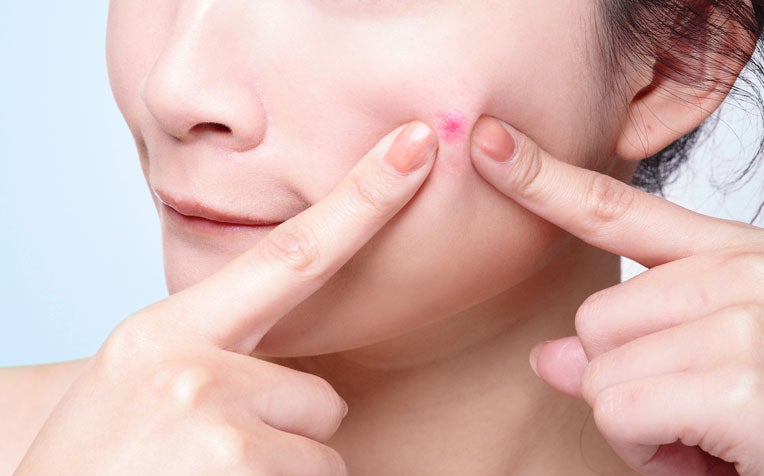
Acne, stretch marks, and darkening of skin are common skin changes experienced during pregnancy.
Like other organs in the body, the skin changes during pregnancy. Stretch marks are among the most common skin changes during pregnancy. Other common changes include acne, blotchy skin, and darkening of exposed parts of the skin. Less frequent skin changes include linea nigra and angiomas.
Dr Wee Wei-Wei, Consultant, Minimally Invasive Surgery Centre, KK Women’s & Children’s Hospital (KKH), a member of the SingHealth group, explains what you can do about these skin changes during pregnancy:
Acne
Higher levels of androgen are at least partly responsible for triggering or worsening acne during pregnancy. This is because this hormone boosts the production of sebum. Acne during pregnancy can occur in all three trimesters.
What you can do: Wash gently with a mild soap or cleanser twice a day. If a moisturiser is used, make sure it is oil-free. Do not squeeze, rub, or pop your pimples because this will aggravate the problem and could lead to scarring.
Use water-based makeup rather than oil-based. Look for products labelled "non-comedogenic" or "non-acnegenic”. Be sure to remove makeup thoroughly before going to bed.
It is best to consult a doctor on the use of medicated acne gels or lotions since some of the ingredients in over-the-counter acne products are not safe for pregnant women or have not been well studied. For severe acne during pregnancy, consult a dermatologist.
Angiomas
These red, mole-like, blood-filled bumps are due to the increased blood flow in the body.
What you can do: Angiomas usually resolve on their own after pregnancy.
Blotchy skin
A high level of pregnancy hormones may leave higher deposits of skin pigment which can appear as blotches on the face.
What you can do: Blotchy skin usually resolves on its own after pregnancy.
Darkening of areola
The darkening of the areola, the pigmented skin around the nipple, is due to the hormone oestrogen. It is a common change during pregnancy and can occur in all three trimesters.
What you can do: This usually resolves on its own after pregnancy.
Darkening of the skin (pregnancy mask)
Darkening of the skin during pregnancy, known as the mask of pregnancy, typically occurs on sun-exposed areas such as the cheeks and forehead. This is due to excess pigment deposits in skin.
What you can do: Apply sufficient sunblock to protect your skin against UV rays.
Linea nigra
This is a dark vertical line on the abdomen and is associated with the hormone oestrogen.
What you can do: Linea nigra usually resolves on its own after pregnancy.
Stretch marks
Most pregnant women will develop stretch marks on the abdomen, buttocks and thighs, because of the pulling and stretching of skin from the expanding uterus and the weight of the pregnancy.
What you can do: Stretch marks will stay but fade over time.
Ref: R14
Contributed by


















 Get it on Google Play
Get it on Google Play